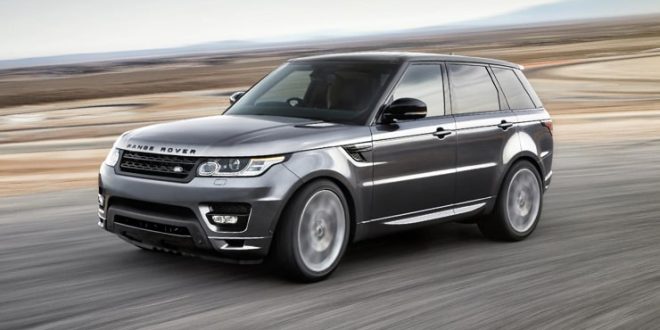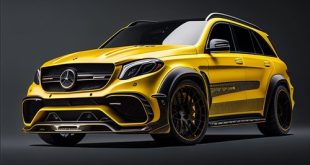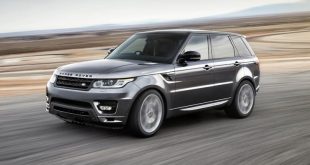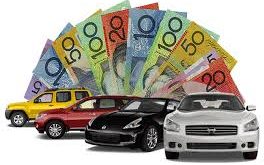1. History of the Range Rover Engine
The story of the Range Rover engine dates back to 1970 when the first Range Rover, known as the “Classic,” was introduced. The original engine was a 3.5-liter V8 engine derived from a Buick engine design. With 132 horsepower and 251 lb-ft of torque, it was sufficient to move the 4,000-pound vehicle over rough terrains and on paved roads alike. This engine, with its characteristic throaty growl and low-end torque, became synonymous with the early Range Rover models, setting a standard for future generations.
Throughout the 1980s and 1990s, Range Rover engines continued to evolve. They increased in displacement and power, with 3.9L and 4.2L V8s introduced, followed by the introduction of a diesel engine variant to cater to fuel-conscious European markets. These engines laid the groundwork for Range Rover’s continued development in powerful yet versatile engines that could traverse both cityscapes and countryside.
2. Engine Options Across Different Generations
Range Rover’s appeal lies in its offering a range of engines to suit various needs and preferences. Let’s examine the specific engines that have defined each generation of Range Rovers and made them standout performers in the luxury SUV segment.
2.1 The First Generation (1970-1996)
The original Range Rover engines, as mentioned, started with the 3.5L V8, which would eventually grow to 4.2L. This engine set a high bar, with its smooth delivery and enough power to manage off-road conditions with ease. Later versions offered a 2.5L diesel engine variant, which, while less powerful, provided better fuel economy, a crucial consideration in European markets.
2.2 The Second Generation (1994-2002)
The second-generation Range Rover saw a shift to the 4.0L and 4.6L V8 engines, which offered a slight boost in horsepower and torque, allowing for more responsive on-road handling. This generation also introduced an inline-six diesel engine, known as the BMW M51 engine. This engine was favored for its fuel efficiency and reliability, aligning well with the increasingly fuel-conscious consumer.
2.3 The Third Generation (2002-2012)
The third-generation Range Rover saw some significant engine upgrades. Land Rover began offering engines sourced from BMW, including a 4.4L V8 and a 3.0L inline-six diesel. In 2005, the company introduced a 4.2L supercharged V8, the first time a supercharged engine had been offered in a Range Rover. This engine delivered impressive performance and became popular with customers looking for extra power and acceleration.
Later models in this generation adopted Jaguar-sourced engines after Ford acquired Land Rover. These included a 5.0L supercharged V8, which produced 510 horsepower, marking a new peak in Range Rover performance. Diesel options also continued, with the introduction of more refined and efficient units.
2.4 The Fourth Generation (2012-Present)
With the introduction of the fourth-generation Range Rover, Land Rover placed a strong emphasis on efficiency and environmental responsibility. Alongside powerful V8s, the company introduced new six-cylinder and even four-cylinder engines, combining fuel efficiency with reasonable power. The current lineup includes Ingenium inline-six engines, available in both petrol and diesel options, as well as hybrid variants that mark Range Rover’s commitment to sustainability.
The most recent addition to the lineup is the PHEV (plug-in hybrid electric vehicle) powertrain, which combines a 2.0L four-cylinder engine with an electric motor. This option allows for short-range electric-only driving, catering to eco-conscious drivers. The introduction of the PHEV is a clear indication of Land Rover’s shift towards electrification, which will undoubtedly continue as the company moves toward a fully electric model lineup.
3. Technical Aspects of Range Rover Engines
Range Rover engines are highly engineered to deliver power, efficiency, and reliability. Let’s break down some of the specific technical features that make Range Rover engines so unique.
3.1 Ingenium Engine Line
Land Rover’s Ingenium engine family, introduced in 2015, represents a major advancement in the company’s engine technology. These engines are available in both four-cylinder and six-cylinder configurations, with options for petrol, diesel, and hybrid variants.
Key features of the Ingenium engines include:
- Modular Design: Ingenium engines are designed with modular architecture, meaning they can be easily adapted to different types of fuel (petrol, diesel, electric) and configurations.
- Advanced Turbocharging: Most Ingenium engines feature turbocharging, which allows for improved power output and efficiency without increasing engine displacement.
- Mild Hybrid Technology: Many Ingenium engines come with mild hybrid technology, where a small battery and electric motor assist the engine, reducing fuel consumption and improving performance.
3.2 Supercharging and Turbocharging
One of the hallmarks of modern Range Rover engines is the use of forced induction technology. Supercharging and turbocharging have become standard in many Range Rover engines, allowing for high power output while maintaining relatively compact engine sizes. The 5.0L supercharged V8, for example, delivers exhilarating performance with 510 to 575 horsepower, making it ideal for drivers who demand the most from their vehicles.
3.3 Hybrid and Electric Technology
The shift toward electric powertrains has brought hybrid engines into the Range Rover lineup. The P400e, for instance, is a plug-in hybrid model that combines a 2.0L four-cylinder engine with an electric motor for a total output of 404 horsepower. This engine allows for a purely electric driving range of up to 30 miles, ideal for short commutes and urban driving.
Range Rover has also developed mild-hybrid engines, which feature a 48V electric motor that supports the engine and improves fuel efficiency. With the rapid growth in electric vehicle technology, Land Rover is expected to introduce fully electric Range Rovers in the near future.
4. Performance and Driving Experience
Range Rover engines are designed to offer a unique driving experience that combines smooth, powerful acceleration with the versatility needed for off-road adventures. The latest V8 engines, for instance, deliver breathtaking acceleration, allowing the Range Rover to go from 0 to 60 mph in just over 5 seconds. Diesel engines, on the other hand, offer high torque at low RPMs, ideal for off-road driving.
The Ingenium engines, with their modular design and mild-hybrid technology, provide a refined and efficient driving experience. They are quiet, smooth, and offer a balanced blend of power and efficiency, making them ideal for city driving and highway cruising. Meanwhile, hybrid options like the P400e allow for emission-free electric driving, adding a new dimension to the Range Rover experience.
5. Sustainability and the Future of Range Rover Engines
The automotive industry is undergoing a significant shift towards electric and hybrid powertrains, and Range Rover is no exception. Land Rover has committed to achieving net-zero carbon emissions by 2039, and electrification plays a major role in this plan. The introduction of plug-in hybrids is just the beginning, as the company has announced plans to release fully electric Range Rover models in the coming years.
These electric models will likely feature cutting-edge battery technology, offering long range and fast-charging capabilities. Combined with Range Rover’s legendary off-road capability, electric powertrains will allow future models to navigate difficult terrains with even greater precision and control, thanks to the instant torque provided by electric motors.
In addition to reducing emissions, electric and hybrid Range Rovers will contribute to a quieter and more refined driving experience, which aligns well with the brand’s commitment to luxury. The future of Range Rover engines is one of innovation, balancing power and efficiency with a focus on sustainability.
6. Conclusion
The Range Rover engine has come a long way from the humble 3.5L V8 of the 1970s. Today, the engine lineup reflects a sophisticated blend of power, efficiency, and environmental consciousness. With options ranging from high-performance supercharged V8s to advanced plug-in hybrids, Range Rover engines offer something for every driver, whether they prioritize performance, economy, or sustainability.
As we look to the future, Range Rover engines will continue to evolve, with electrification at the forefront of the brand’s strategy. The transition to hybrid and fully electric powertrains will bring a new era of performance and capability, ensuring that the Range Rover remains an icon of luxury and innovation for generations to come.
 Diverse Perspectives: Insights & Stories Exploring Ideas, Sharing Knowledge
Diverse Perspectives: Insights & Stories Exploring Ideas, Sharing Knowledge





